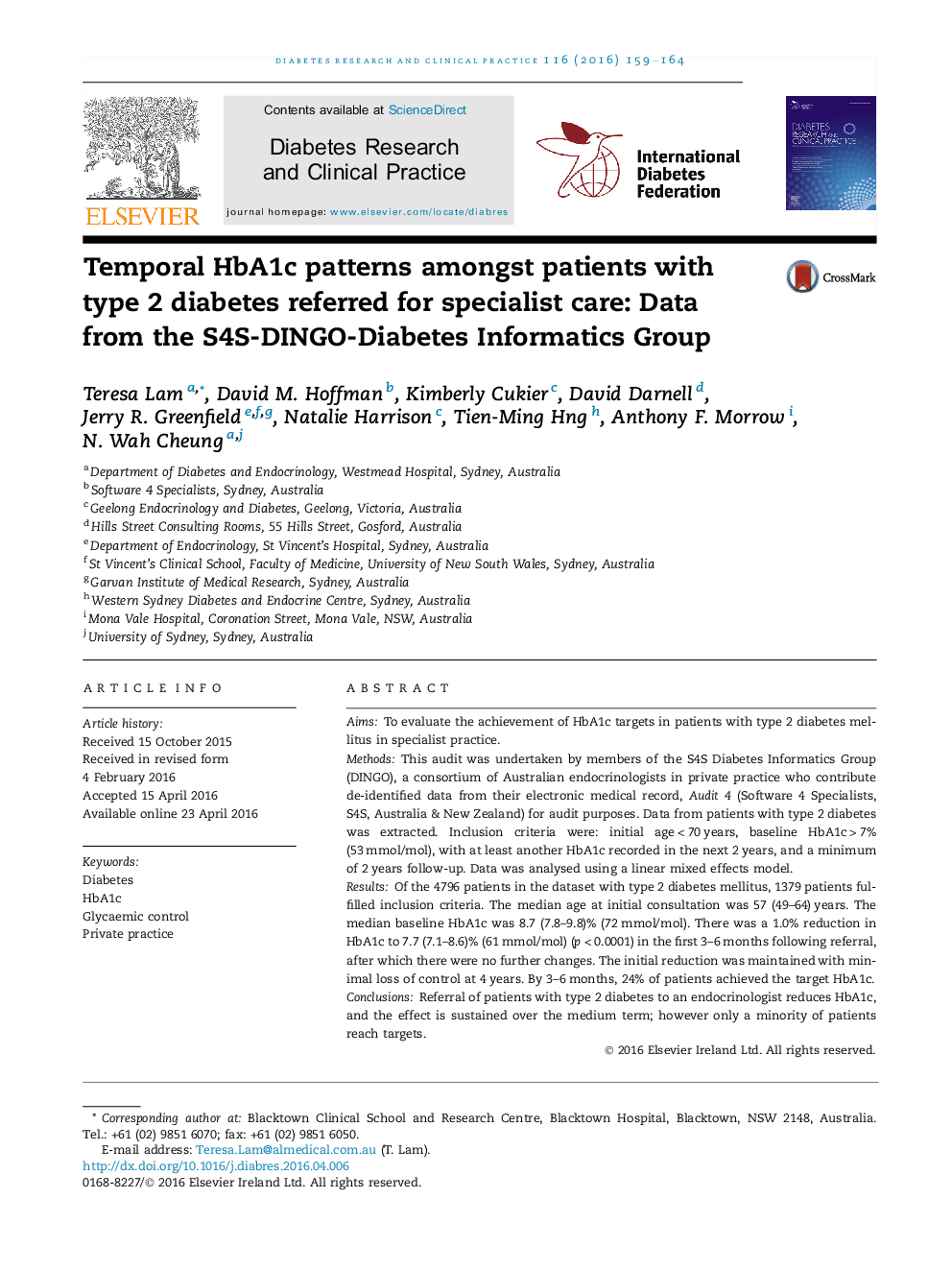| Article ID | Journal | Published Year | Pages | File Type |
|---|---|---|---|---|
| 5898977 | Diabetes Research and Clinical Practice | 2016 | 6 Pages |
â¢The achievement of HbA1c targets in private practice was evaluated.â¢De-identified data from electronic medical record Audit 4 was used.â¢There was a 1.0% reduction in HbA1c in the first 3-6 months following referral.â¢The initial reduction was maintained with minimal loss of control at 4 years.â¢By 3-6 months, 24% of patients achieved the target HbA1c (⩽7%).
AimsTo evaluate the achievement of HbA1c targets in patients with type 2 diabetes mellitus in specialist practice.MethodsThis audit was undertaken by members of the S4S Diabetes Informatics Group (DINGO), a consortium of Australian endocrinologists in private practice who contribute de-identified data from their electronic medical record, Audit 4 (Software 4 Specialists, S4S, Australia & New Zealand) for audit purposes. Data from patients with type 2 diabetes was extracted. Inclusion criteria were: initial age < 70 years, baseline HbA1c > 7% (53 mmol/mol), with at least another HbA1c recorded in the next 2 years, and a minimum of 2 years follow-up. Data was analysed using a linear mixed effects model.ResultsOf the 4796 patients in the dataset with type 2 diabetes mellitus, 1379 patients fulfilled inclusion criteria. The median age at initial consultation was 57 (49-64) years. The median baseline HbA1c was 8.7 (7.8-9.8)% (72 mmol/mol). There was a 1.0% reduction in HbA1c to 7.7 (7.1-8.6)% (61 mmol/mol) (p < 0.0001) in the first 3-6 months following referral, after which there were no further changes. The initial reduction was maintained with minimal loss of control at 4 years. By 3-6 months, 24% of patients achieved the target HbA1c.ConclusionsReferral of patients with type 2 diabetes to an endocrinologist reduces HbA1c, and the effect is sustained over the medium term; however only a minority of patients reach targets.
